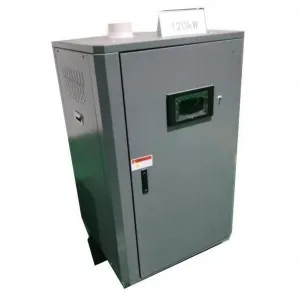Des . 16, 2024 10:58 Back to list
investment castings manufacturer
The Evolution and Importance of Investment Castings in Manufacturing
Investment casting, also known as lost-wax casting, is a sophisticated manufacturing process that has gained significant traction across various industries, including aerospace, automotive, medical, and more. As an investment castings manufacturer, understanding the evolution, advantages, and applications of this method is vital to appreciate its growing importance in the modern manufacturing landscape.
Historical Background
The origins of investment casting can be traced back to ancient civilizations. Archaeological evidence suggests that the lost-wax technique was used in the production of bronze and gold artifacts as far back as 5,000 years ago in China and Egypt. Over the centuries, this method has been refined, leading to enhancements that have made it suitable for contemporary industrial applications. Today, investment casting combines traditional craftsmanship with advanced technology to produce complex and precision components.
The Investment Casting Process
The investment casting process begins with creating a wax pattern of the desired part. This pattern is then coated with a ceramic shell, which provides the mold. Once the shell is hardened, the wax is melted and drained away, leaving behind a hollow mold. The molten metal is then poured into this mold, filling the cavity left by the wax pattern. After the metal cools and solidifies, the ceramic shell is broken away, revealing the final component.
This iterative process allows manufacturers to create intricate parts with exceptional dimensional accuracy and surface finish. Investment casting is capable of producing components with complex geometries that are often unattainable through traditional manufacturing methods.
Advantages of Investment Casting
Investment casting provides several distinct advantages that contribute to its popularity among manufacturers
1. Complex Geometries One of the key benefits of investment casting is its ability to create highly intricate shapes and designs. This is particularly beneficial in industries that demand lightweight yet structurally sound components.
2. Material Versatility Investment casting can accommodate a wide range of materials, including various alloys of steel, aluminum, brass, and even exotic materials like titanium. This versatility allows manufacturers to select the best material for specific applications.
3. Superior Surface Finish The investment casting process results in exceptionally fine surface finishes, often eliminating or reducing the need for further machining or finishing processes.
investment castings manufacturer

4. Dimensional Accuracy Parts produced via investment casting exhibit high precision, which is critical in industries where tolerances are tight and functionality is paramount.
5. Reduced Waste The investment casting process generates minimal material waste compared to other manufacturing methods, making it a more sustainable option.
Applications in Various Industries
Investment castings are employed in numerous sectors, showcasing their versatility and importance. In the aerospace industry, components such as turbine blades, fuel nozzles, and structural elements require lightweight yet durable parts that can withstand extreme conditions. Investment casting meets these challenges by producing components that not only perform well but also contribute to energy efficiency.
In the automotive sector, investment castings are used for critical parts, from engine blocks to exhaust components. The ability to create complex shapes makes it possible to optimize performance while reducing weight, which is a significant goal in automotive design.
The medical field also benefits from investment casting. Surgical instruments, implants, and prosthetics require precision and reliability, and investment casting ensures that these critical components meet stringent regulatory standards.
The Future of Investment Casting
With ongoing advancements in technology, such as the integration of computer-aided design (CAD) and 3D printing, the investment casting process is continually evolving. Manufacturers are leveraging these technologies to enhance design flexibility, reduce lead times, and improve overall efficiency.
Furthermore, as industries increasingly focus on sustainability, investment casting presents opportunities for environmentally friendly manufacturing. Its reduced waste and ability to work with recycled materials align well with the growing demand for sustainable practices.
Conclusion
In conclusion, investment casting plays a crucial role in modern manufacturing, offering unparalleled benefits in terms of precision, complexity, and material versatility. As industries continue to evolve and face new challenges, investment castings manufacturers will remain at the forefront of innovation, delivering components that meet the highest standards of quality and performance. The continued investment in this manufacturing methodology will not only drive technological advancements but also contribute to a more sustainable future in manufacturing.
-
Centrifugally Cast Iron Water Main Pipe | Ductile Iron Solutions
NewsAug.24,2025
-
Durable Cast Steel Concrete Pipe Mold Bottom Rings & Base Trays
NewsAug.23,2025
-
Centrifugally Cast Iron Water Main Pipe for Reliable Mains
NewsAug.22,2025
-
Durable Centrifugally Cast Iron Water Main Pipe
NewsAug.11,2025
-
Centrifugally Cast Iron Water Main Pipes for Reliability
NewsAug.10,2025
-
High-Quality Centrifugally Cast Iron Water Main Pipes
NewsAug.09,2025


